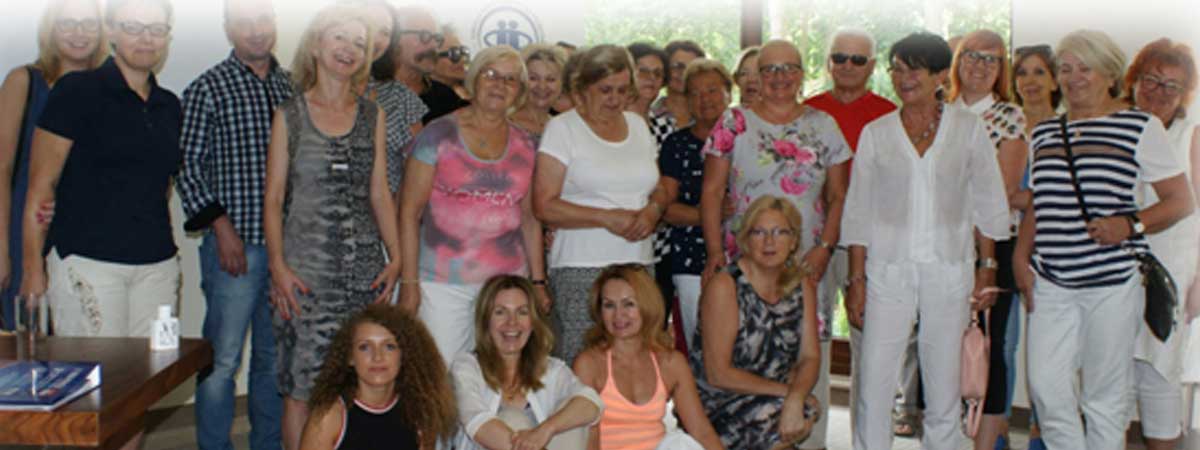Redesigning a Global Framework for Measuring Patient Safety’ was the theme of the meeting organized in Salzburg, Austria, from 5 to 10 September 2019.
This meeting brought together 50 participants, including global healthcare leaders, researchers and design thinkers, patients, providers, and experts in measurement, quality improvement, operations, and informatics from measurement and patient safety-focused organizations from around the globe.
The program had a strong focus on synthesizing experience from different settings, and focused on cross-continuum measures that support the safety of patients and the healthcare workforce with the ultimate aim of developing design principles and a framework of actionable areas of measurement focused on learning and improvement.
Regina Namata Kamoga from Uganda and Jolanta Bilinska from Poland represented World Patients Alliance on this meeting.

PAIN: Validation and Dignity
We have spent a lot of time talking about the best way to describe one’s pain. The American Chronic Pain Association has pain maps that help you show the intensity of your pain, where it is, and how it feels, explain what makes it worse, and for some, the symptoms they experience. https://www.theacpa.org/pain-management-tools/communication-tools/tracking-tools/
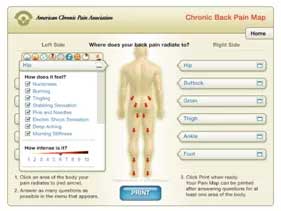
These maps have been effective in helping people describe their pain so that the health care professional will better understand the pain. Why is it important that the ACPA provide these to people with pain? One very simple answer is that more than anything, a person living with pain wants to have his or her pain validated. We want their health care professionals to know that our pain is real. When a person has to “prove the pain” they become very defensive and visits to the health care professional don’t always go well.
These maps have been effective in helping people describe their pain so that the health care professional will better understand the pain. Why is it important that the ACPA provide these to people with pain? One very simple answer is that more than anything, a person living with pain wants to have his or her pain validated. We want their health care professionals to know that our pain is real. When a person has to “prove the pain” they become very defensive and visits to the health care professional don’t always go well.
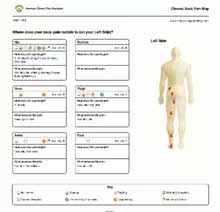
When a person’s report of pain is believed, it calms their defensiveness and can help them work toward managing their pain. Interestingly, it also provides some sense of dignity to know that someone understands that they are in pain. If you think about it, no one wants to live with pain. To have pain and be questioned about the reality of the pain is extremely difficult to handle and depressing. When a person is believed about their pain, they will be treated with the same respect and dignity as anyone else.
Recently the American Chronic Pain Association and some if its members took part in a project called This Is Pain. Seven members were selected and flown to New York to tell their stories to a visual artist, Trina Merry, who translated their stories into a beautiful work of art on their bodies. When asked about the experience, one of the things that stood out to me was that each person had been treated with dignity and respect. I think the fact that the artist believed their stories, listened to what they had to say, and was able to capture each story in such stunning artistry speaks volumes. I invite you to see their pictures and hear their stories as we explore This Is Pain.
This is Pain
Over the years, the American Chronic Pain Association has developed many tools to help you better communicate your pain to your health care professional. They are easy, free, and help you make the most of your time with your health care professional by providing a picture of your pain. While these pain maps are useful tools for you, several of our ACPA members had the opportunity to go an extra step when describing their pain.
Seven ACPA group facilitators were selected to tell their pain journey to an artist, Trina Merry, who depicted their story on the body of that person. Once completed, they were made into life size posters and displayed at the Oculus in New York City from December 12 to 15, 2019. You can hear the participants tell their stories and see it being created on their bodies at www.thisispain.com.
We asked each of them to share what this experience meant to them. In their own words here are their comments.
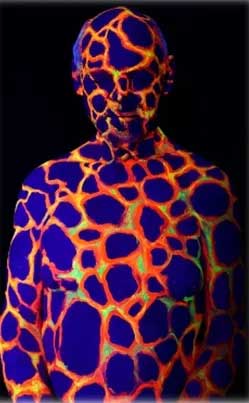
Alan Zanetell
Facilitator Englewood, Colorado Chapter
Al’s chronic pain began in 1966. Nearly two dozen surgeries (including twelve spinal fusions) later, Al’s entire adult life has been dominated by finding ways to cope with chronic pain each day. He described his pain as hot lava that courses throughout his body, burning into each and every muscle, like a volcano erupting.
I want to express my appreciation for being given the opportunity to participate in This Is Pain. I couldn't be more honored than to be chosen as one of the participants. What a strong validation of dealing with chronic pain for over 50 years.
The opportunity to have a major part in This Is Pain has given a great ending to what had been a difficult 2019. The replies are amazing from so many dealing with pain everyday of their life. I, along with the program, an making differences in many lives.
But, more than that, I feel strongly about telling my story with the hope it may reach and help untold number of pain suffers. Even throughout more decades than I care to count, I know I and others can rise above their pain daily by expressing and acting upon that desire.
Thank you for this wonderful opportunity. So, how did I know 54 years of chronic pain would give me the opportunities to help others?
Cindi Scheib
Facilitator Harrisburg , Pennsylvania Chapter
Cindi's life was turned upside down over labor Day Weekend, 2014. She started experiencing pain all over her body, which she describes as feeling like cactus splinters driving into her body incessantly. These jabbing sensations have deeply affected her quality of life. Yet Cindi has never let chronic pain define who she is as a person, and remains grateful for things she does have in life—her loving sister, her friends, and the ability to give back by working with the American Chronic Pain Association.
Gosh, it was so wonderful to meet you all at the event! I had the most outstanding and incredible experience working with the This is Pain project! Literally, I feel that it was a highlight of my life! I was treated so wonderfully, and felt so respected and honored! From the moment I left my home, until the moment I arrived home, I was treated like a queen. During the interview, I felt heard. Everyone was so accommodating and empathic and they truly seemed engaged in hearing my story. During the painting process, I felt respected! I have never allowed myself to be so vulnerable, “ naked” in front of a whole crew of people. But I knew that this was a once in a lifetime opportunity, to be painted by Trina Merry! They allowed me to have some wine to help me relax, and they played my choice of music… and I still can’t believe that I stood there for 7 hours of painting and never had to go to the bathroom! Initially, I wore the black robe, but after the first hour, I was just exposed and naked to everyone. However, everyone was so professional and courteous to me and to my sister. It was incredible that I became comfortable with being painted naked with so many people watching! ( I think the wine helped. LOL) By the way, the catered food was so delicious and my hotel room was perfect. Thank you ACPA for allowing me to be involved in this project!
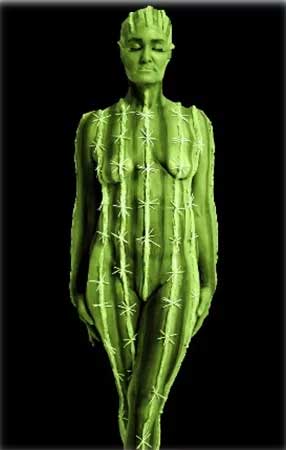
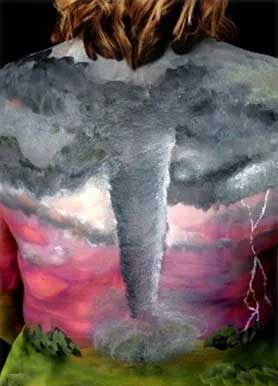
Shannon Green
Facilitator Austin, Texas Chapter
Shannon, a wife and mother, lives with chronic pain every day. She describes her pain as a tornado powering through her body, leaving a path of destruction in its wake. Shannon believes kindness is the key to making life easier for those living with this condition, as simple acts of compassion can make even the hardest of days seems a little more manageable.
The opportunity to meet people with shared experience was invaluable. The amazing Trina Merry painted a tornado scene on my back. It was interesting to see how pain was interpreted so differently among us.
The NYC trip gave me my confidence back. I was able to walk 6 miles in one day which was a big surprise for me. This prompted my new goal of 8,000 steps per day. This new goal is a game changer. I am so thankful to the American Chronic Pain Association for this opportunity.
Tom Norris
Facilitator, Los Angeles, California Chapter
Tom is a military veteran whose career was cut short due to the onset of chronic pain – an experience he describes as wrestling a tiger that is on fire. He hopes that by sharing his story, people everywhere will develop an understanding of what living with chronic pain truly feels like.
When I was first approached about participating in this effort to “show” chronic pain, I had my doubts. I thought body painting had died out in the 80’s! Boy, was I wrong!
The pictures of Trina’s interpretation of my back and referred abdominal pain has become a standard part of my group and individual sessions. It is amazing just how useful this illustration is in getting someone’s attention.
I had a ball participating in This is Pain!
Every facet of participating in this campaign was first class! At every turn, I was treated with respect and courtesy. Every detail of my interviews, journey to and from New York, car arrangements in New York City, hotel accommodations, and filming was taken care in such a manner that I knew this was a very important effort!
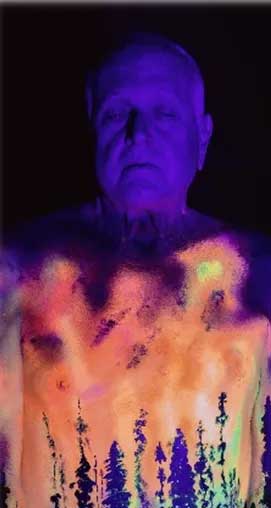
The organizers made extra efforts to take care of each of us. I was amazed at the ease with which my requirements were accommodated. I was able to get extra leg room for each of my flights and had no problem getting wheelchair accommodating transportation to and from the airports. The organizers were able to make sure I had the extra day at either end of the trip to recover to “be my best” for the interview and camera. The room at the hotel was handicapped accessible and was great!
Frankly, I was surprised at how “low stress” the interview and painting schedule was for me. I felt I was part of the team and integral to the production schedule. I was interviewed on camera by the director and never felt any stress or pressure. The director was extremely personable and interested in me and my journey with chronic pain. I felt I found a friend.
When my turn came to get painted, Trina and her associate put me totally at ease. Although I was a little leery of being in underwear in front of a group of women (I joked that I had been naked in front of only my wife for the last 31 years!), the entire situation was not stressful or strange at all. Everyone was professional and there to get a job done. Although I was a little stiff by the time the painting session was finished, the result was worth it.
I was touched by the care with which everyone treated me. An assistant even offered to help me get the paint off my back after the photography session was complete.
When I had problems with flight on the way home, I was able to reach out and contact the program coordinator to easily resolve the problem.
From start to finish, this was an amazing effort that was well coordinated and organized. I understand that each of us was treated with respect and courtesy through the effort.
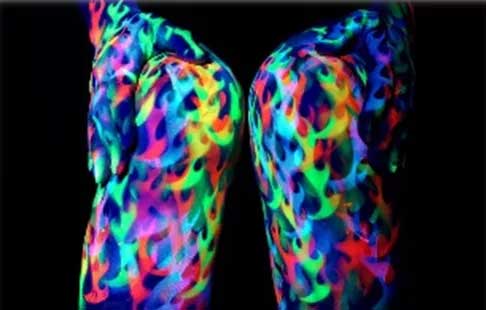
Trish Walsh
Facilitator, Latrobe, Pennsylvania Chapter
Trish has been living with chronic pain for 32 years. She battles chronic pain in her knees, making it difficult to stand, walk or even sit comfortably at times. Trish wants the world to know that chronic pain is real and that those that live with this condition face enormous challengers each and every day.
My trip to New York City as part of the “This is Pain” campaign was both exciting and scary at the same time. I was so surprised to get the call about participating and very honored to be chosen. The fact that I had never been on a plane or to a big city did make me question myself but passing on this opportunity was not an option. I have been trying to help give those who suffer with chronic pain a voice for more than 20 years. There was no reason to be afraid because each and every detail was seamlessly coordinated by the Mission team. From car service to and from the airport, and each day to the studio, to the fabulous catered meals each day on set. No stone was left unturned. The on-camera interview was incredible. I received a peek at what it was like to be on TV. The entire production crew was wonderful and made me feel calm and comfortable.
The painting session with Trina Merry was unbelievable. Her vision to bring the pain of each participant to life was spectacular. Lastly, the “networking” breakfast set for the final day of my journey gave me the chance to meet not only other ACPA group leaders, but also some of the people from BioDelivery Sciences International, Inc. Everyone’s excitement in hearing our stories could only be described as amazing—total respect from each person. Although I was exhausted when I arrived home it was a fantastic voyage that I am extremely proud to be involved with.
Catherine Cartwright
Facilitator, Vallejo, California Chapter
Catherine has lived with the effects of chronic pain, both on her body and on the relationships with those around her, for 21 years. While she often struggles to maintain her independence, Catherine channels the power of a positive mindset to help cope with her condition and is committed to being the victor over her circumstance.
I had the honor and privilege to be a part of the “This is Pain” Exhibit in New York City. It was one of the most exciting events in my life.
It brought light to chronic pain, especially invisible pain. Most people feel if you can’t see it, it isn’t real. For the first time in my chronic pain history I felt this would validate my invisible pain outside of my medical and support system. Now it has a voice not just for me, for others as well.
Having my whole body painted was an awesome experience in itself. The strings represented how my Fibromyalgia feels, like a phone or electric main box wires being pulled all at the same time. Being porcelain described for me the stiffness of my osteoarthritis.
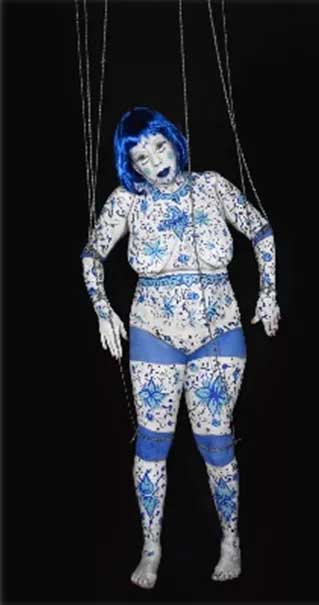
The interview served to highlight and describe the facts of how life is for people who live their lives in spite of chronic pain. We are victorious.
The main point is to acknowledge and bring awareness to the public that people in chronic pain; the visible as well as the invisible now has a face and place in pain history.
I would like to sincerely thank the This is Pain staff, Trina Merry, the artist, and all others who were a part of this great work and the American Chronic Pain Association for this experience and being my beacon of light.
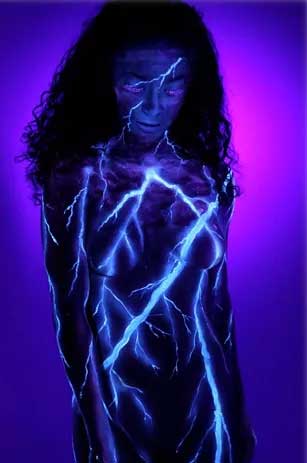
Patricia Hubert
Facilitator Berkeley Heights, NJ Chapter
Patricia’s life with chronic pain began in 2003 following an injury sustained during yoga practice. She describes her pain as burning, electric lighting bolts sending shockwaves through her body. Patricia’s hope is that everyone living with chronic pain can be heard and believed, no matter the cause.
I am pleased to have had the opportunity to participate in the This is Pain initiative this past November. I was able to convey the pain experience, what it really feels like, and to share the journey I’ve had with pain which persisted following a spinal injury 17 years ago, eventually becoming chronic. Furthermore, I was able to describe the impact it has had on my life.
When I received the request to participate in my inbox I thought I was too busy. But the nagging voice in my head told me: Pat, you have to do this for everyone with chronic pain. We need to be heard and understood. This is an ethical/moral decision. I retrieved the email and entered my data, figuring that would probably be the end of it. When I was subsequently contacted by the person who would interview me, I was impressed with her masterful questioning which built on my responses and prodded me to think deeper. She, and a second interviewer, were very respectful of my need to pause at times to further reflect on the deep hurt, the feelings of isolation, and of being alone in my suffering. I was brought to tears and they allowed me those tears. I was able to be vulnerable with them due to their sensitivity, and I really appreciated it. Further, it helped me realize I still have feelings which needed to be acknowledged and reconciled.
The artist later interviewed me directly and asked for my description of the pain sensation. She also asked what color it is—something I never thought about. My pain begins in my buttock and continues down one leg. Because of the location I was not comfortable with the artist paining directly onto my skin. A model was used for the actual painting of my pain, which is neuropathic and variable based on the time of day, activity level and other factors. At various times it pulls, burns, is sharp, dull, hot, or shock like. There are times when nothing will calm it. I’ll change position, walk around, etc. and it changes the intensity slightly.
I also have knee pain on the same side from an injury and have altered pain sensation there, called allodynia, which is actually a decrease in the knee pain intensity. We stayed in a great hotel in the East Village and were all together only once for a great breakfast. I believe the others were quite brave for having their bodies painted. The artist took quite a bit of artistic liberty with her representation of my pain using a reverse blue light technique. She painted my pain as widespread bodily pain. I cannot even imagine how I’d cope with that.
I know that the invisible nature of pain is often a barrier. It is my hope that the This is Pain initiative will make a difference in removing this barrier. The director of filming was an attentive young man who asked great questions and was quite sensitive and truly interested in what I had to say to his pointed questions. He later confided that his wife has chronic pain and this experience interviewing people with pain has caused him to feel regret for his prior relative lack of understanding of her true suffering. He said he called her the first day at a break and each evening has apologized for his lack of understanding before. This tells me something about chipping away at barriers.


